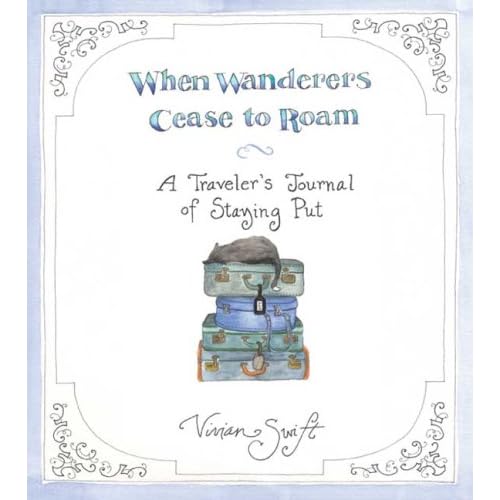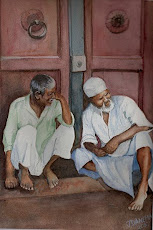
I've been fighting off a cold with echinacea, hot baths and..it seems I need something stronger. This cold wants me. I don't want it, though. So I happen to know that making onion soup seems to drive the cold away, and eating it on a rainy, cold Sunday isn't a bad idea, either. After I cut up the 2 lbs of onions, I felt completely better, eyes streaming, nose clear. Of course, if you are using Onion Soup as a cold remedy, remember to wash your hands a lot, keep your nose clean and use the soup-tasting method you ought to be employing anyway--which is:
Take a teaspoon and dip out the sample into
A tablespoon, from which you sip. HOLD THE SPOON AWAY FROM THE POT as you sip.
When you have tasted the soup and corrected your seasonings, put the dipping spoon in a spoon holder by the pot for further dips, and put the tasting spoon in the loop in your chef jacket or put it in the dishwasher. The key is NEVER to sip from the dipping spoon. This keeps the soup sanitary for all.
The last time I had REAL onion soup was at Le Pied du Couchon in Paris (near Les Halles.) It features temptingly-roasted pigs' trotters dusted with crumbs and of a deep mahogany brown, skin crisp and curling as a speciality in this old marketing section of Paris, but I am not a fan of pork. So I ordered oysters, onion soup, a salad and the house Chablis, which was excellent. A very nice little lunch.
Real French Onion Soup a la Joanna
Ingredients
2 lbs yellow onions, peeled and halved, then sliced thinly. (A knife is the thing. A food processor can be used but you lose the pain and suffering aspect, as well as the anti-viral properties of the onion gas.)
A heavy pot (I use a Le Creuset dutch oven)
1 tbs good olive oil
3 tbs very good butter (Plugra, or other top grade butter, or at least a good unsalted.)
Melt the oil and butter and saute the onions for 15 minutes with the cover on to sweat out the goodness. Then open the cover and saute them until they are a deep ochre color. Sprinkle them with a bit of salt and a 1/2 tsp of raw sugar to aid the browning process. You have to stir this fairly frequently. I use a spatula to make sure I scrape up the browned bits from the pot's bottom. It will be a shock, but the onions will have reduced from about 1/3 of the pot's volume to a thin sludge of deep ochre onion jam at the bottom of the pan. When the onions are done (don't cheat this step) add in 3 tbs of flour (we use white spelt, but any white flour will do, not whole meal.) Stir for a few minutes to cook out the flour and coat the onions.
Now add 2 quarts of boiling organic beef broth (vegetarians may substitute veg broth) and a packet of Goya beef "cubito" bouillon. If you are vegetarian, use a tbs or so of Vegemite or Marmite instead. Add a half cup of a New Zealand Sauvignon blanc or a 1/4 cup of white grape juice or apple juice if you must not have alcohol, season to taste with sea salt and fresh ground pepper. Simmer partially covered for 40 minutes. The onion "sludge" will perk up quite a bit at the end and you will have a beautiful, brown, rich soup that will impress anyone.
To serve it properly, you can make it gratineed, or baked with cheese. I do not know a way to make this vegan, so if you are vegan style vegetarian, you are on your own here. (I think soy cheese might work, but I'm not even going to try it.)
You need about 2-3 tbs of cheese mixture per serving. I use 1/3 parmesan, 1/3 gruyere and 1/3 swiss and it has to be imported REAL cheese and even Boar's Head gruyere is not real and I was pretty miffed at paying $16 a pound for rubbery, metallic-tasting "cheese" so find a Swiss gruyere. It's well worth it. Same goes for the Swiss and the Parmesan. Use GOOD cheese. Grate the three cheese and toss. I grate coarsely for this.
You will also need croutes, in this case I cheat and use Ile de France petits pains grilles, which are small thick squares of French bread in melba form and they are actually good. Bimbo brand toasts (Spanish section of the grocery store) could also work. If you want to be really authentic, get a good baguette and slice, toast slowly in the oven until it is hard and dry. Rub with a cut garlic clove and a bit of olive oil if you like. Our baguettes are fluffy little fakers, so I don't bother.
To assemble the soup, take an oven proof ramekin or individual casserole or if you have them, onion soup bowls. Pour in the soup and a tsp of GOOD cognac if desired, then place a croute in the center (2 or 3 if using the toasts instead) and scatter the cheese on top. Bake 20 minutes in a 350 degree oven, then broil at the end to brown the cheese. Placing the bowls on a baking sheet really helps. This is going to be wicked hot when served, so warn the guests, who are probably only used to lukewarm American food and never have seen something served piping hot.
A nice white (a flinty Chablis, or the En-Zed Marlborough Sauvignon Blanc) and a leafy salad of romaine to follow make for a great meal.











